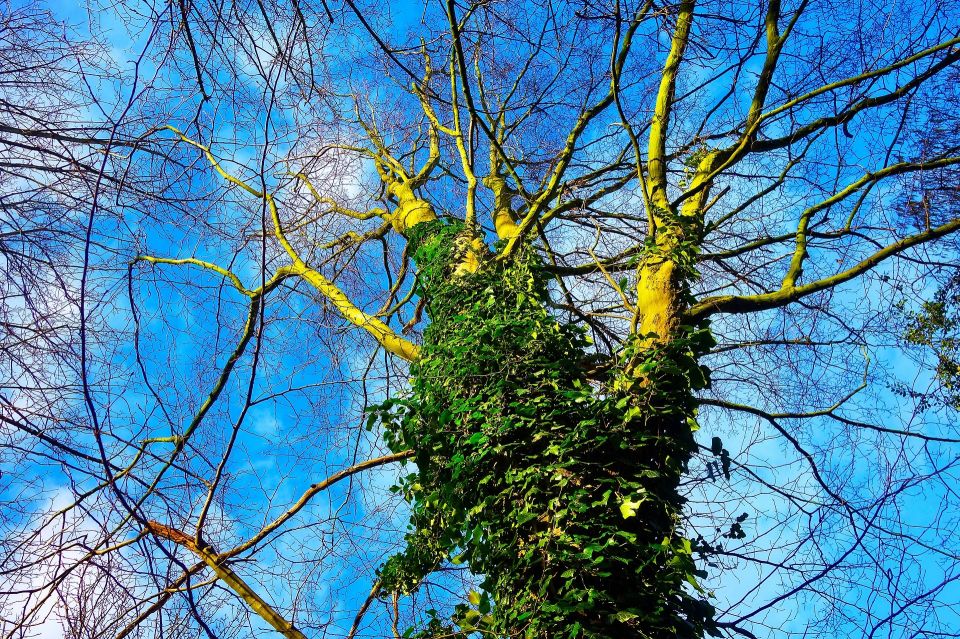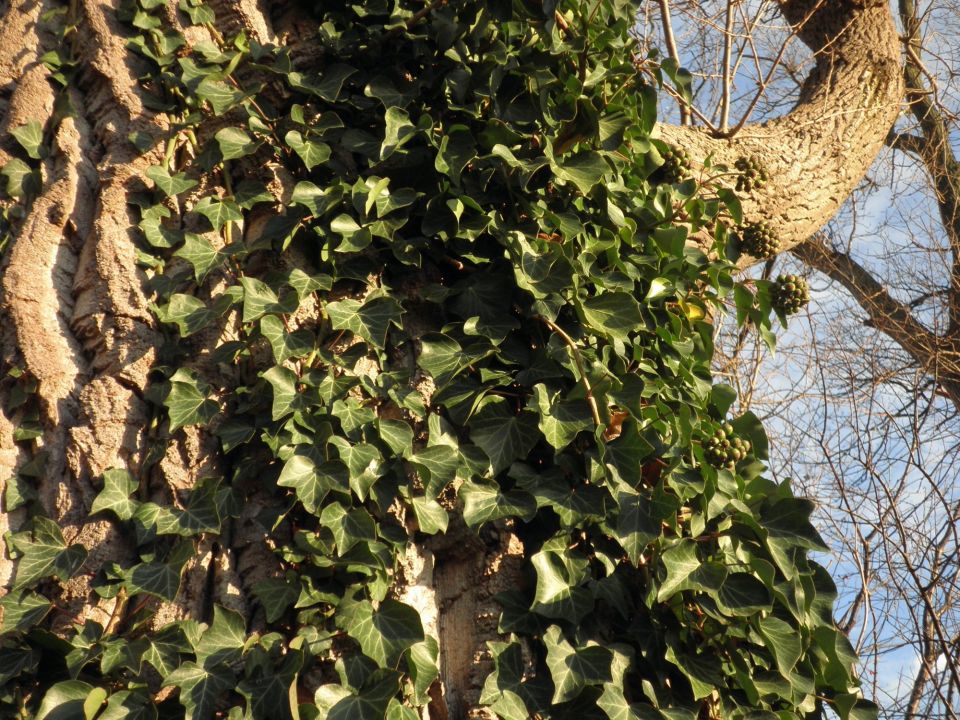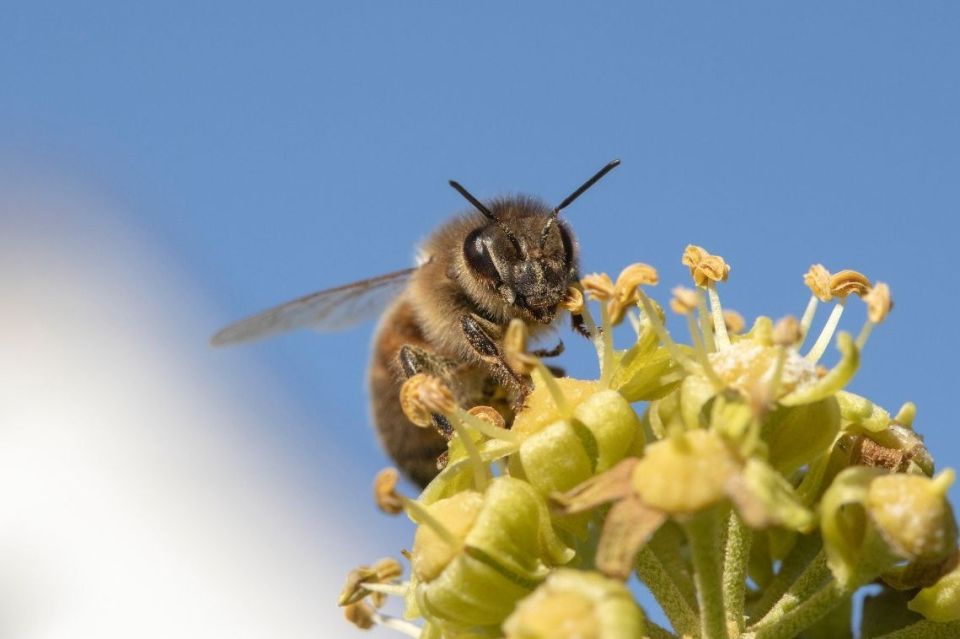Does ivy kill trees?

Have you ever looked at a tree that seems smothered by ivy and wondered if the tree needs rescuing? You’re not alone. A common assumption is that ivy kills trees - so let's dig into that claim.
What is ivy?
Ivy is an evergreen climber that produces aerial roots that allow it to attach onto tree trunks or walls, or move across the ground. Whilst some may class it as a 'weed', ivy actually has huge value to wildlife - but more on that later.
Friend or foe
It's long been believed that ivy damages trees and buildings, but there is little scientific evidence for this. Only the roots attached to the ground have penetrative qualities, which is how it gets nutrients from the earth. It’s not a parasite, so it doesn’t need to delve into the tree itself; it just needs a prop to climb up. The aerial roots are only used as a support and don’t damage the bark. A healthy tree will not be affected, and a tree looking worse for wear is likely to have been in a bad condition to start with.
One way ivy can harm a healthy tree is by smothering leafing branches, and therefore limiting the tree's ability to photosynthesise and get enough food. This can be particularly harmful for trees with sparse canopies, such as larch or ash. This on its own wouldn't be enough to kill a tree, but if the tree is already vulnerable from disease, rot and age, it may suffer and be more likely to topple over in strong winds.

When it comes to wildlife, it’s clear that ivy is a friend. The yellow-green flowers come out late in the year, September into autumn. They provide a lifeline of nectar for insects at a time when there are few flowers. Its beneficiaries include honeybees and red admiral butterflies. The ivy bee has even shaped its whole life cycle around ivy. It emerges between September and November to fit in with ivy’s flowering period, a time when other bees are finishing up for the year.
The blue-black berries mature through winter, which many birds enjoy, and the high fat content helps them to survive into spring. Thick clumps of ivy provide a cosy home for bats, birds and insects.

While you're here...
Our work only happens because of the generosity of our funders and donors. If you'd like to see more trees in our towns and cities, consider becoming a supporter today.
So what about ivy’s past fame?
Looking through history, ivy has climbed its way into many cultures. The ancients admired it, associating it with the Greek god Dionysus, who morphed into the Roman god Bacchus. He was the god of wine, fertility, theatre, cultivation and revelry, and only ivy was good enough to be his crown. Ivy became a leafy symbol of achievement and wreaths crowned winners of poetry contests in Rome and winning athletes in Greece.
In pagan times, ivy must have seemed miraculous, staying bright green throughout bleak, harsh winters. Along with holly, it was used to decorate the inside of homes. Cheery, verdant leaves are a sign of life during the dark times and a reminder of the spring to come - a pre-Christian pagan tradition that carried on despite being banned at one point by the council of churches.
But you can’t keep a good ivy down! It went on to become firmly embedded within Christmas and other Christian traditions. A bit of this jolly spirit took the shape of carols. The Holly and the Ivy is still familiar to many folk, though now all mention of the ivy, apart from the one line, has been lost.
Ivy was also regarded as a symbol of fidelity, maybe because of the way it can bind different plants together. This was adopted by later Christian priests who would present a wreath of ivy to newly married couples. Some bridal bouquets still contain a sprig of ivy. As well as love and friendship, ivy went on to be associated with immortality and death. It is often seen carved on Christian tombs and was once placed on the graves of the dead on All Souls' Day.
Long live the ivy
From hero to villain, it's time to go back to celebrating ivy and all it offers. This resilient greenery provides shelter for birds, food for insects, and cosy hiding spots for small mammals. Its evergreen leaves brighten winter gardens and woodlands, reminding us that life persists even in the coldest months.
Next time you spot ivy climbing a tree or trailing along a wall, take a moment to appreciate its quiet, tireless work.
Want to stay connected to the trees?
Our monthly newsletter, Tree Times, provides a healthy dose of tree-related news, opportunities, fun facts and events.
Donate to Trees for Cities and together we can help cities grow into greener, cleaner and healthier places for people to live and work worldwide.
Donate